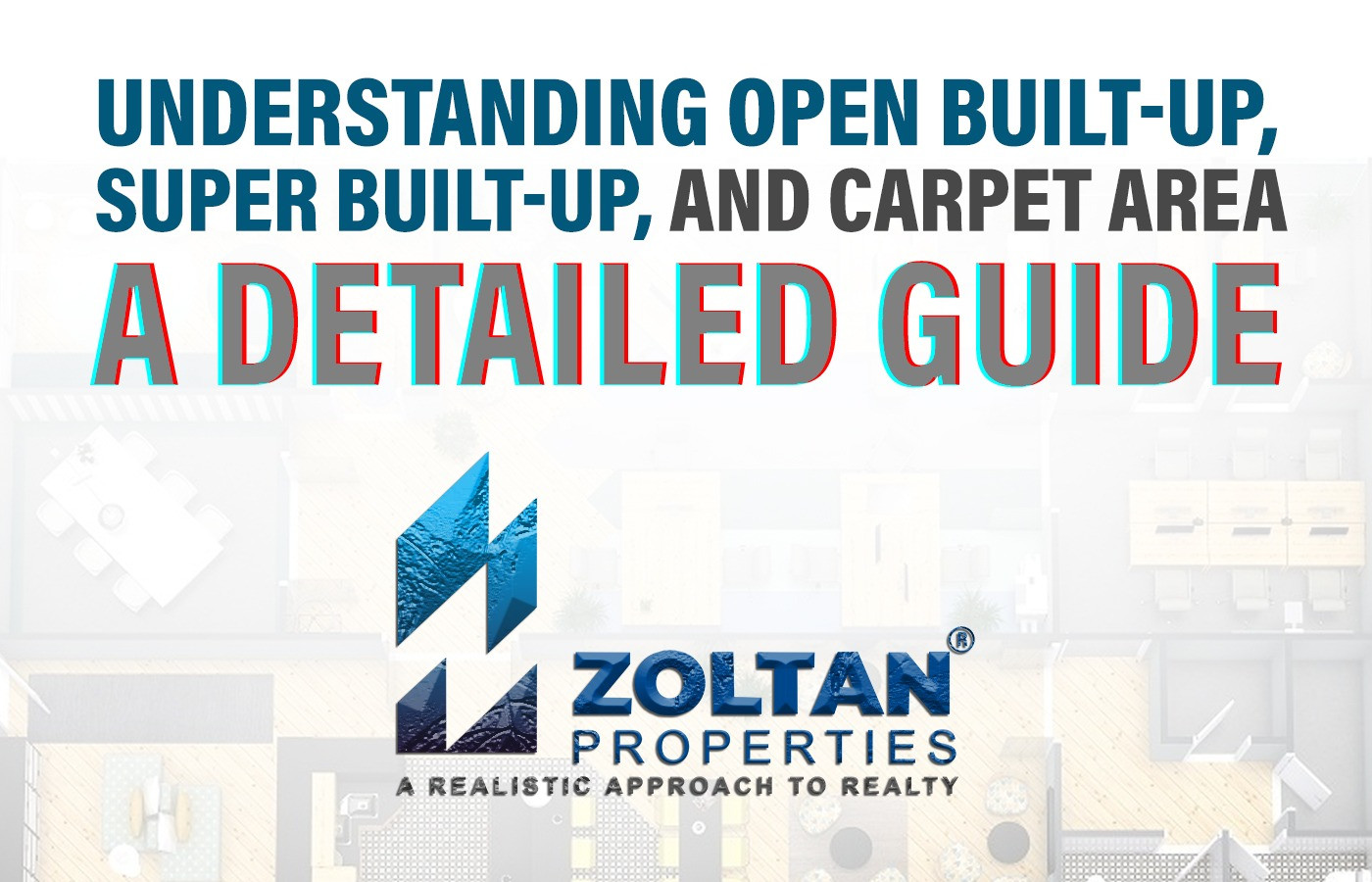Venturing into the real estate market can be both exciting and overwhelming, especially when faced with complex terms such as open built-up area, super built-up area, and carpet area. In this comprehensive guide, we aim to demystify these terms, providing clear explanations and insights to empower you to make informed decisions when buying your dream home or invest
Carpet Area: The Livable Space
The carpet area is the most straightforward of the three terms, representing the actual usable space within the walls of an apartment or building. It excludes the thickness of inner walls, columns, and common facilities, offering a clear idea of the living space available.
Calculation: Carpet Area = Total Area − Excluded Areas
Key Points about Carpet Area:
Purely Residential: It includes bedrooms, living room, dining area, kitchen, bathrooms, and internal staircases.
Exclusions: It does not account for the thickness of outer walls, areas under services shafts, exclusive balcony or verandah area, and common areas such as lift lobbies.
Utility: The carpet area is crucial for understanding the actual usable space within the property.
Built-Up Area: Including Walls and More
The built-up area extends the concept of carpet area by incorporating the thickness of both inner and outer walls, along with balconies. It provides a more comprehensive understanding of the space that a property occupies.
Calculation: Built-Up Area = Carpet Area + Area of Walls + Area of Balcony
Key Points about Built-Up Area:
Wall Thickness: It accounts for both the inner and outer walls' thickness.
Additional Spaces: Includes balconies, terraces (with or without roof), and utility areas attached to the property.
Percentage Increase: Typically, the built-up area is around 10% to 15% more than the carpet area, varying based on the design and layout of the building.
See Also: Discovering the Wealth-Building Potential: Real Estate Investment Solutions for Maximum ROI
Super Built-Up Area: A Broader Perspective
The super built-up area is the most inclusive among the three, encompassing common spaces shared among building occupants. This includes lobbies, lifts, staircases, and amenities like gyms and pools.
Calculation: Super Built-Up Area = Built-Up Area + Proportionate Common Area
Key Points about Super Built-Up Area:
Common Areas: Factors in the spaces shared among all occupants, such as lobbies, lifts, staircases, and amenities.
Loading Factor: The difference between the super built-up area and carpet area, often referred to as the "loading factor," can significantly increase the total area on paper.
Variability: The percentage of super built-up area over the carpet area can vary widely, often ranging from 25% to 50%, depending on the project's amenities and layout.
Implications for Buyers:
Understanding these terms is crucial for prospective buyers for several reasons:
Transparency: Helps in assessing the actual usable space versus what is advertised by developers.
Cost Analysis: Aids in comparing prices and understanding the value offered since most properties are sold on a super built-up area basis.
Informed Decisions: Allows buyers to make more informed choices regarding their investment or residential needs.
Conclusion:
In the complex world of real estate, knowledge is power. By understanding the distinctions between carpet area, built-up area, and super built-up area, you're better equipped to navigate the market, compare properties effectively, and make decisions that align with your needs and expectations. Always ensure to ask the developer or seller about these areas explicitly and get the details in writing to avoid any future discrepancies. With this guide, you're one step closer to making an informed real estate investment or purchase.

Practical Tips:
Verify Areas: Always ask the developer for the breakdown of areas and verify them if possible.
Understand Loading: A lower loading factor means more carpet area. Compare the loading factor when considering different properties.
Legal Documents: Ensure that the carpet area is clearly mentioned in your legal documents.
Understanding these terms can significantly influence your decision-making process when buying property. It enables you to accurately assess the space you are paying for and compare different properties on a level playing field. Always ensure clarity on these measurements from your developer or seller to make an informed purchase.

 IN
IN
 France
France
 Germany
Germany
 Greece
Greece
 India
India
 Saudi Arabia
Saudi Arabia
 Spain
Spain
 United Arab Emirates
United Arab Emirates
 United Kingdom
United Kingdom
 United States
United States






